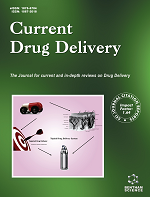-
s Temporal Separation in the Release of Bioactive Molecules from a Moldable Calcium Sulfate Bone Graft Substitute
- Source: Current Drug Delivery, Volume 11, Issue 5, Oct 2014, p. 605 - 612
-
- 01 Oct 2014
Abstract
Treatment of infected bone defects presents a considerable challenge due to the complications that occur from significant bone damage concomitant with contaminated tissue. These wounds are most often treated in a two-step sequence, where the infection is first eliminated before any attempt to repair the bone is undertaken. In order to combine these two treatment steps into one procedure, a moldable bone grafting material was developed to deliver drugs in a temporally separated manner. This was accomplished by a two-layered calcium sulfate composite consisting of a moldable outer shell containing antibiotic-loaded poly(lactic-co-glycolic acid) microspheres wrapped around a preformed core containing an osteogenic drug. The release of vancomycin from the shell portion began immediately and continued over the course of 6 weeks, while the release of simvastatin from the core was delayed for 12 days before being released over the next 4 weeks. Bioactivity of vancomycin was shown in modified Kirby-Bauer experiments in which whole samples inhibited Staphylococcus aureus (S. aureus) growth for 2 weeks. This two-layered system is capable of delivering antibiotics locally for clinically relevant periods of time and delaying the release of osteogenic drugs to mimic a two-step procedure that has potential for treating infected bone defects.


